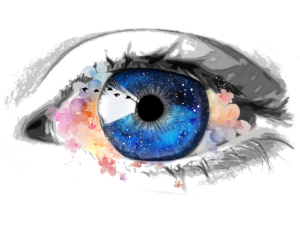A logo is the most important thing in a business. A logo is usually known as the first impression of the company. Many software are used by a logo designer to create a unique logo for your company.
 I will leave a list of some of the best software that can be used for logo designing.
I will leave a list of some of the best software that can be used for logo designing.
Adobe Illustrator
Adobe Illustrator comes from Adobe Creative Suite. It has plenty of features that allow you to make different designs and illustrations in no time. Adobe Illustrator works with vector design applications. It is said to be the best software for vector-based designing. This software is relatively easy and lets you improve your design perfectly.
CorelDraw
CorelDraw is the easiest design software you will come across. Even if you are a beginner, CorelDraw will make your logo design process a cakewalk. There are other tools in CorelDraw like Corel capture and Corel photo-shop that again enhance your designing experience. The logos created in this software are extremely professional and of superior quality.
Adobe Photoshop
Adobe Photoshop is usually known as the master of photo editing. This is another one and probably the best one from the Adobe family. Photoshop is used by design professionals to create magnificent logos, images, illustrations and 3d paintings. You need some real Photoshop skills to make great designs here.
GIMP
GIMP is the short form of GNU Manipulation Program. This logo design software is free to use and is an open-source image editor. It is associated with features that have an intuitive interface for you to create beautiful designs. You can use GIMP on platforms like Linux, Windows and Mac OS X.
Inkscape
Inkscape is an open-source vector design software. It is free to use. It is perfect for designing any kind of illustrations and any other type of graphics. Inkscape is compatible with Linux, Windows and Mac OS X. This software supports SVG format which stands for Scalable Vector Graphics. There is also a web design library that helps you to create some excellent illustrations.
Canva
Canva is online design software. It is effortless and quick to use. You can create some explicit logos and designs from the templates provided by the software. Canva is free to use, but it also has a premium version called Canva Pro which is available at a nominal price. This software is great for beginners and non-designers as you don’t require any design experience to use this tool.
 Hatchful by Shopify
Hatchful by Shopify
Hatchful logo maker is powered by Shopify and is a fantastic logo design software. It creates logos suitable for your business and specifications. When starting to create, you have to choose your business field, and then you have to choose a layout from the options. After that, add the name and tagline of your business. They will give suitable options, and then you are also free to edit those to give a personal touch.
Adobe Spark
Adobe knows when to launch which software when it comes to design. Yet another software from the Adobe family, Adobe Spark is just as cool as other design software. In this software, you can create beautiful graphics with the visual method. Logos can be created in minutes with Adobe Spark.
Are you looking for the best logo designer in Adelaide? Well, you are in the right place. Call our Studio 60 Design now to get the best logo for your company.
